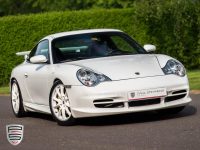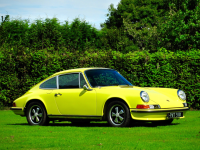Rouen-Les-Essarts, Haute Normandie, France
You’d think that the site of Porsche’s solitary Grand Prix success as a manufacturer would be easily identifiable. Today, all that marks out the location of the old Rouen-Les-Essarts course though, is a bus stop sign – entitled ‘Circuit Auto’ – a few hundred yards away from where the start-finish line used to be situated.
However, despite this lack of pomp and ceremony, you can still follow in Dan Gurney’s wheel tracks; the circuit’s infrastructure may no longer exist (all traces were demolished in 1999) but the public roads can still be driven.
Situated halfway between Calais and Le Mans, you ideally want to be heading east along the N138 in order to drive the majority of the Les-Essarts track in one go. This section of ‘Route Nationale’ traces the path of the circuit’s northernmost straight, the slip off onto the D938 – signposted towards Elbeuf – the location of the ‘Scierie’ right-hander (the 11th of Rouen’s 12 turns).
400m further down the D938, a roundabout marks the spot of the final ‘Virage du Paradis’. The first exit takes you onto the old pit straight, the road’s two lanes segregated by white bollards, preventing you from taking the racing line (although the 70kph speed limit and reasonably high level of traffic also ensure you won’t be needing to use all the tarmac).

As you drive past the bus stop, the road disappears downwards, providing a daunting setup for the first corner, a super-fast, lightly banked right-hand sweep that must have had the drivers in 1962 holding their breath.
The old track continues to carve downhill, running through a similarly sweeping left-hander before the infamous right at ‘Six Freres’. After another fast left, you’re suddenly on the brakes and down through gears for the ‘Virage du Noveau Monde’.
Cobbled in the days of Gurney, the road here is now tarmacked but it’s hard not to still imagine the hordes of spectators who used to gather at this vantage point, packing the steep bank on the hairpin’s exit to cheer on their heroes. The tight right takes you onto the D132 and it’s here that the circuit becomes narrower, more technical and more fun to drive.
Bereft of traffic, you can push your 911 a bit harder, fighting against the surprisingly steep gradient through a right-hand kink before a medium-speed curve at turn seven.

Location: Rouen, France
Latitude: 49°20’07.4” N 1°00’43.9”E
Length of drive: 6km
Points of interest:
Rouen Cathedral
Jardin des Plantes de Rouen, rouen.fr/jardindesplantes
Food and accommodation:
Hotel de Bourgtheroulde, hotelsparouen.com
L’Auberge de la Pomme, laubergedelapomme.com
There’s little time to relax now as you cut through the tree-lined hillside, pitching into the ‘Virage du Samson’, the camber hugging you into the apex before spitting you out through ‘Virage de Beauval’. A final right-hand kink takes you over the brow of the hill and onto the back straight.
Unfortunately, if you pass under the A13 link between Caen and Paris, the super-fast curve that would have taken you back onto the N138’s path no longer exits, the Grésil Forest (after which the corner was named) having reclaimed the land after the national Autoroute was built.
Your best bet is to retrace your steps and drive back along the straight, turning left onto the D132A (known as the Chemin de l’Étoile), which follows the route of the shorter Rouen track raced in the early 1950s.
This brings you out just before the ‘Circuit Auto’ bus stop, allowing you to drive the major portion of the circuit over and over again, which is just as well as one lap simply isn’t enough to soak up the atmosphere of this once spectacular venue.

More from Total 911

SPONSORED: Legal requirements for winter tyres in Europe

Sales Spotlight: Porsche 996.2 GT3

Total 911’s Greatest Porsche 911 drives ever – Josh’s picks




Comments (0)